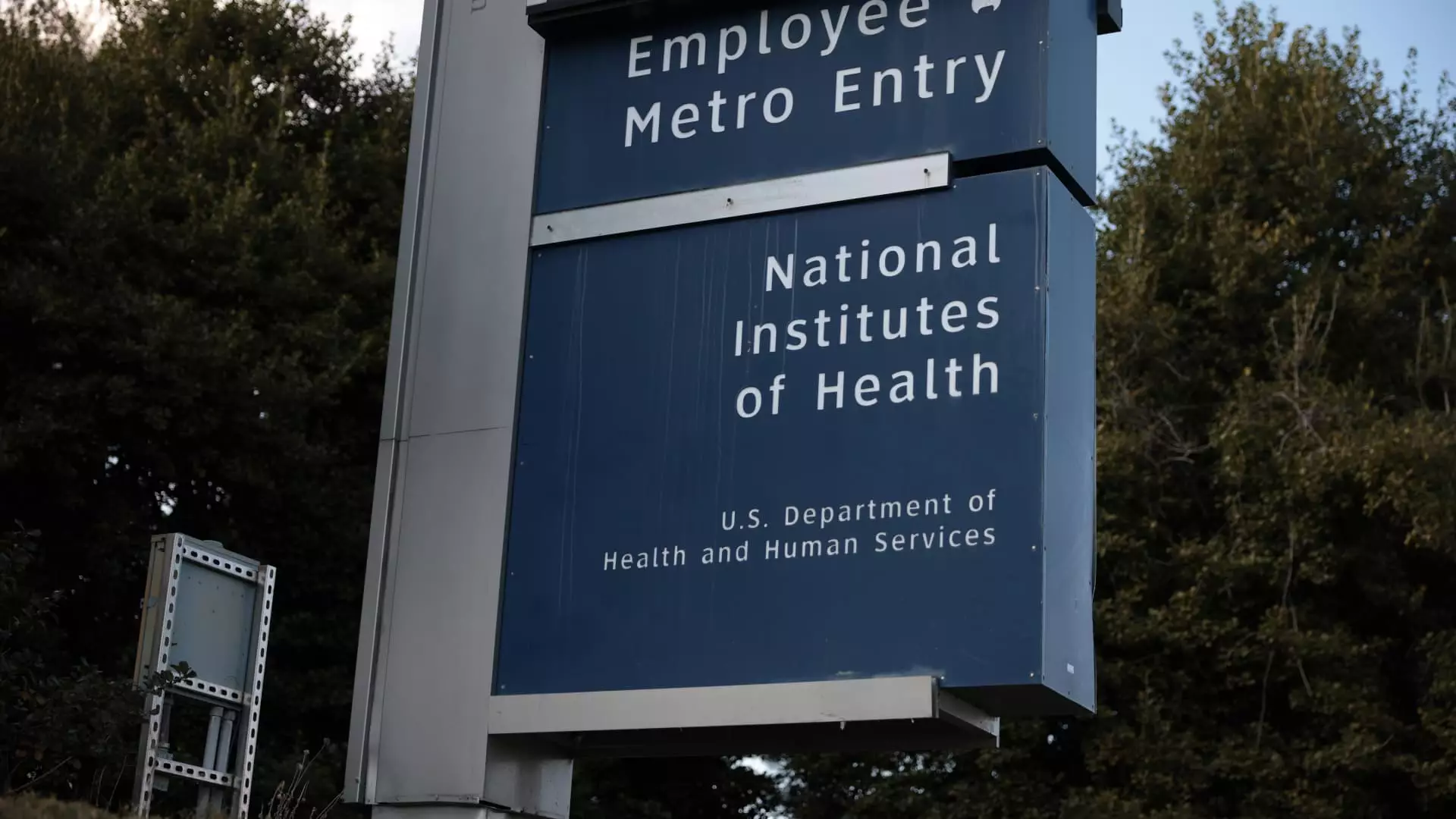The recent decision by the Trump administration to impose radical cuts to the National Institutes of Health (NIH) funding has sparked outrage and concern among scientists, investors, and stakeholders in the life sciences sector. Slashing indirect costs to a meager 15%—a figure substantially lower than the average 27% to 28%—signals not merely a shift in financial policy but an alarming signal that the U.S. government is prioritizing budgetary savings over the future of scientific innovation. As the nation’s largest public funder of biomedical research, the NIH has long been a cornerstone in the development of groundbreaking therapies and technologies. Without adequate funding, the risk of stagnation in scientific progress looms larger than ever.
Investors Voice Their Alarm
When the NIH announced its decision, the reaction in the financial markets was swift and unforgiving. The stocks of notable life science tools companies plummeted in response, with firms like Bruker and Illumina seeing declines of 14% and 11%, respectively. This immediate market reaction illustrates a broader unease; financial analysts at major firms, including Bank of America, have indicated that this funding cap could have crippling implications for research institutions. Federal funding is a lifeblood for many of these entities, and the potential loss of over $6 billion in research budgets will likely force budgets into the red, impacting critical infrastructure and staffing.
Expectations are high that these institutions must now grapple with the existential threat posed by the inability to sustain operational research environments. The fundamental structure of academic research is at risk if researchers lose access to facilities and resources crucial for carrying out their work. Despite reassurances from the White House that these funding reforms are for the general good, the reality tells a different, much more troubling tale.
A Bipartisan Call for Caution
Interestingly, even some Republicans are expressing their discontent over these funding cuts. Senator Susan Collins from Maine has labeled the proposed changes as “poorly conceived,” highlighting the bipartisan recognition of the potential damage to the U.S.’s research capabilities. This isn’t merely a political issue; it raises questions about the nation’s commitment to science and technology, which is often touted as a driver of economic growth and innovation. The bipartisan nature of the criticism provides a small glimmer of hope that the funding cuts may not withstand the relentless scrutiny they face.
Uncertainty in the funding landscape naturally breeds fear among those reliant on NIH resources. As we move deeper into 2024, researchers are raising alarm bells about the increased risk of stalled scientific progress. Such setbacks not only hamper individual projects but could have cascading effects on the broader economy, particularly in local areas with heavy concentrations of research institutions.
The Consequence of Stagnation
If these funding cuts remain in place, the implications for the U.S. global standing in scientific research could be severe. Analysts are warning that reducing NIH funding structures will shift the blame from one administration to another—politics aside, the only clear losers will be the next generation of innovation and discovery. Research efforts that contribute to the U.S. reputation as a leader in drug discovery and advanced healthcare solutions will be jeopardized. The U.S. has historically been at the forefront of nearly all revolutionary scientific advancements, so why would we willingly place ourselves on a path toward mediocrity?
Tara LeGates, a researcher at the University of Maryland, poignantly addressed the stark reality, underscoring that indirect costs essentially provide the necessary infrastructure for executing research projects. Without it, entire research programs are at risk of collapse. Situations like hiring freezes are already emerging, and universities might respond by suspending admissions, contributing to an academic brain drain in crucial research fields.
Long-Term Pain
Faced with these cuts, we must ask ourselves: Are we choosing short-term financial gain over long-term global competitiveness? Some analysts suggest that investors should consider seizing the moment to enter the life sciences market should prices dip further. Yet, how can one build on a foundation that is crumbling beneath us?
In a political environment that is increasingly quick to prioritize fiscal conservatism over scientific investment, the ramifications of these funding cuts have the potential to echo through generations. The stakes are excessively high, and it’s time for both sides of the political spectrum to realize that investing in research isn’t merely a budget item—it represents the bedrock of future health, economic growth, and scientific progress. Without sufficient resources, we risk losing our place at the forefront of global innovation altogether.

